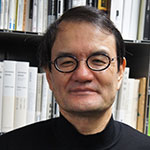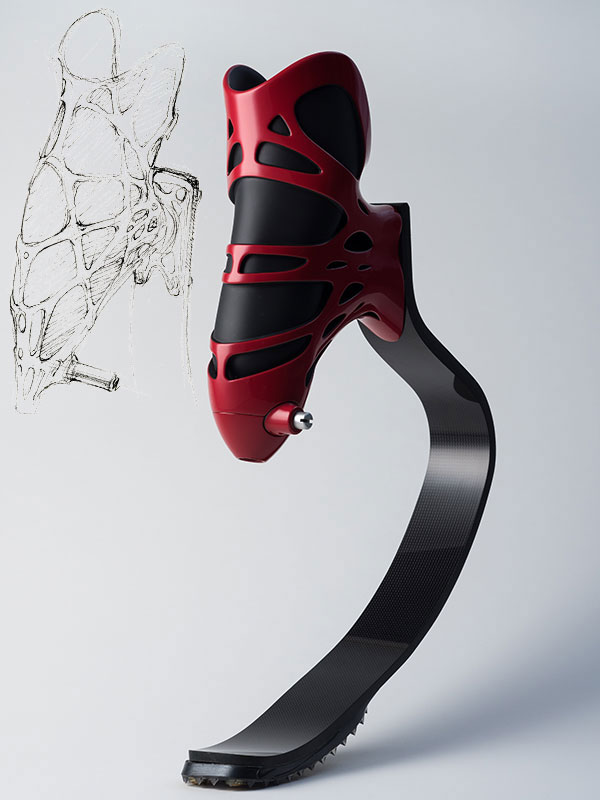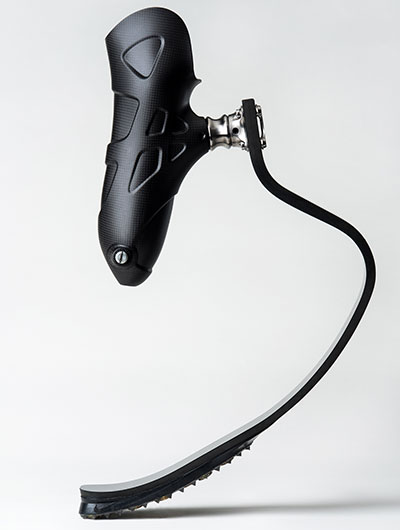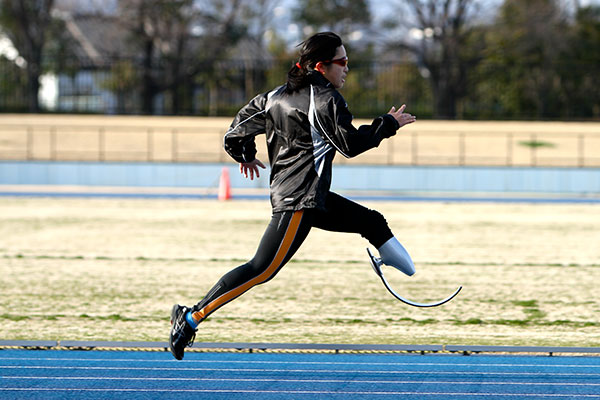Beautiful prosthetic legs inspired by the “Blade Runner” Working towards mass customization through additive manufacturing

Research, education and legacies related to the sporting event
The Olympic and Paralympic Games will be held in Tokyo for the first time in more than half a century. The University of Tokyo, which is also located in the metropolis, has a long history of involvement with the Games. As you learn about UTokyo’s contributions to this global sporting event, the blue used in the Olympic and Paralympic emblem may very well start to take on the light blue hue of the University’s school color.
| Design Engineering |
Working towards mass customization through additive manufacturing
 Shunji Yamanaka Shunji YamanakaProfessor, Institute of Industrial Science |

Professor Shunji Yamanaka, who has built an impressive career for himself as an industrial designer, was at Keio University in 2008 when he began his project to develop a beautiful prosthetic leg. He was inspired by the running style of Oscar Pistorius, the so-called “Blade Runner” who came to international prominence through his appearances not only in the Paralympics but in the Olympics as well, despite having both legs replaced by prostheses following amputation.
“I was entranced by the sight of him at the Beijing Paralympics, his prostheses and the rest of his body united as he ran. Throughout my career, I’ve tried to find ways to improve the relationship between human beings and the manmade objects we use. What I was seeing in those TV images struck me as the ultimate relationship between man and manmade object, a kind of perfect functional beauty.”
An online search for terms like “prosthetics” and “sports” soon made Yamanaka aware of the Tetsudo Kousaikai Prosthetic and Orthotic Foundation Care Center. On a visit to the facility to see how prostheses were made, he quickly realized that the concept of design had not yet been introduced into prosthetic limbs manufacture in Japan, which had its beginning in a scheme to support railway workers who had been injured on the job. Inspired by the sincere attitude and work performance of Fumio Usui, the country’s leading sports prosthetist, Yamanaka vowed to design a prosthetic leg that would be beautiful as well as practical.
“I suppose in the past, this was a world where design was not felt to be necessary. But I knew from my own experience how people’s reactions can change dramatically when they are confronted with an aesthetically attractive object. And I thought that as a university researcher, I might be able to develop projects that would be impractical for corporate designers.”
Yamanaka launched a research team and started interviewing people who used prosthetic legs. This was when he met track-and-field athlete Saki Takakuwa. Although she was later to become highly successful as a Paralympian, at the time she was still a youthful-looking high school student. Her unembarrassed admission that she wanted a prosthetic leg that would “look cool” encouraged the team as they encountered a lot of problems in developing their new prosthesis.
In 2009, the Rabbit — a prototype model for a below-knee prosthesis for sports — was unveiled at an industry expo. The new prosthesis, with its S-shaped spring and gently curved socket, created a big stir. When Takakuwa later became a student at Keio University, she joined Yamanaka’s research lab. There is no doubt that the presence on the team of an athlete who used a prosthesis herself gave the project a major boost.
“She told me once that, when she was wearing this prosthetic leg, it seemed easier for her friends to approach her and start a conversation. I was delighted to hear this. A lot of the time, I think people can feel a bit awkward to approach and start talking to someone who has suffered an injury and has a limb in a cast or something looking painful. Design has the power to change that situation for the better.”

The project has entered a new phase since the team moved to the University of Tokyo’s Institute of Industrial Science in 2013 and started working on the mass customization of Yamanaka’s beautiful prosthetic legs using a technology known as AM (Additive Manufacturing). To put it simply, this approach uses a 3D printer to produce large numbers of prosthetic legs that are individually tailored to the needs of the user.
“Everybody’s legs are different, both in terms of size and condition. This means prosthetists need to make careful adjustments when fitting a prosthesis or it will be useless. This takes time and money. But now, by incorporating the expertise that prosthetists have built up over many years, we have developed a CAD (computer-aided design) system that can use the data obtained from a 3D scan of a leg to produce a fitting socket automatically. In this way, it is possible to make massive savings in terms of time and money.”
The CAD system developed by Yamanaka and his team has now entered its test phase for practical application, in collaboration with the Tetsudo Kousaikai. It will soon be possible to mass-produce prosthetic limbs that are uniquely fitted to the needs of the individual user. Meanwhile, Takakuwa, now a star of para-athletes, is competing for a place in the national team that will appear at the Tokyo Paralympic Games. One of the choices for the prosthesis that will become part of her body and stride out against the ground when she runs is the Carbon Rabbit, a refinement of Yamanaka’s original Rabbit prosthesis.

* This article was originally printed in Tansei 40 (Japanese language only). All information in this article is as of March 2020.






